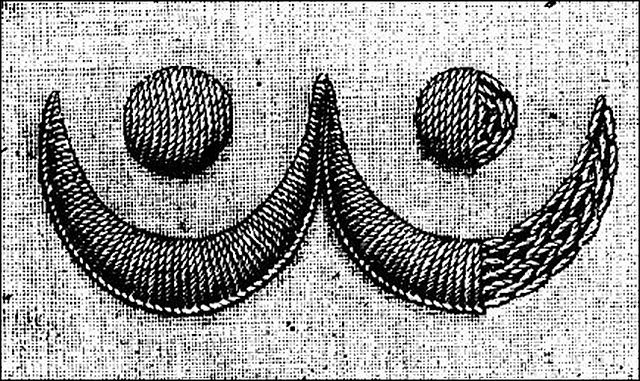Top Qs
Timeline
Chat
Perspective
Buttonhole stitch
Stitch to reinforce edges or for decoration From Wikipedia, the free encyclopedia
Remove ads
Buttonhole stitch and the related blanket stitch are hand-sewing stitches used in tailoring, embroidery, and needle lace-making.[2]



Remove ads
Applications
Traditionally, this stitch has been used to secure the edges of buttonholes.[3] In addition to reinforcing buttonholes and preventing cut fabric from raveling, buttonhole stitches are used to make stems in crewel embroidery, to make sewn eyelets, to attach applique to ground fabric, and as couching stitches. Buttonhole stitch scallops, usually raised or padded by rows of straight or chain stitches, were a popular edging in the 19th century. Buttonhole stitches are also used in cutwork, including Broderie Anglaise, and form the basis for many forms of needlelace. This stitch is well represented on 16th- and 17th-century whitework items. The buttonhole stitch appeared on the Jane Bostocke sampler (1598) which is the earliest, signed sampler known to date and is presently housed in the Victoria and Albert Museum in London.[4]
Remove ads
Variants
Examples of buttonhole or blanket stitches include:
- Blanket stitch
- Buttonhole stitch
- Closed buttonhole stitch, in which the tops of the stitch touch to form triangles
- Detached buttonhole stitch
- Tailor's buttonhole stitch
- Buttonhole stitch variations
- Buttonhole shading
See also
References
Other References
External links
Wikiwand - on
Seamless Wikipedia browsing. On steroids.
Remove ads




